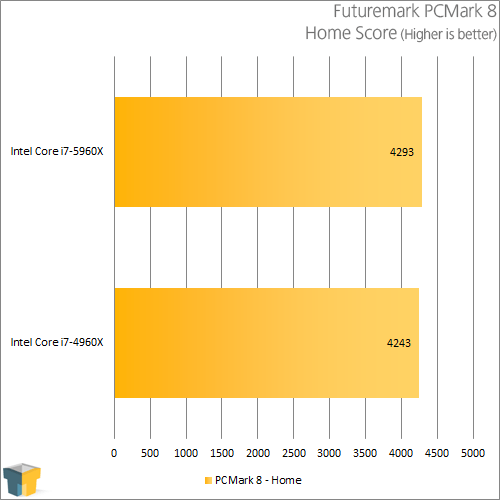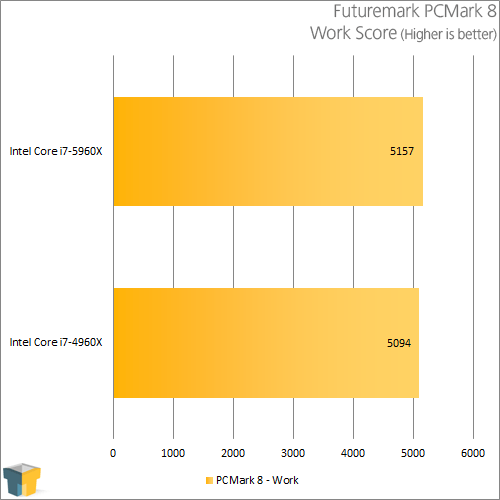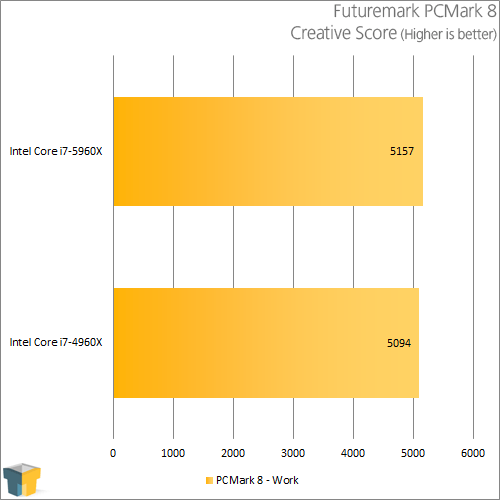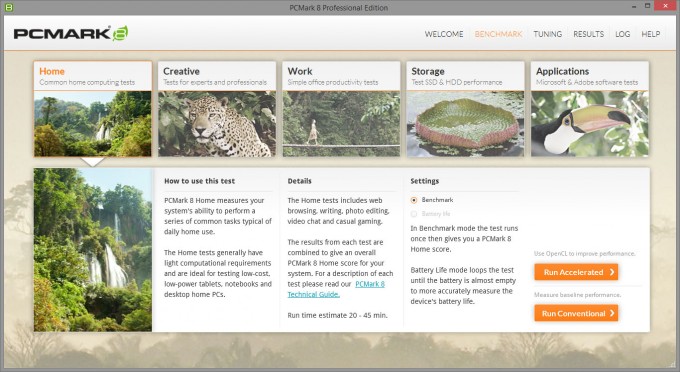- Qualcomm Launches Snapdragon 4 Gen 2 Mobile Platform
- AMD Launches Ryzen PRO 7000 Series Mobile & Desktop Platform
- Intel Launches Sleek Single-Slot Arc Pro A60 Workstation Graphics Card
- NVIDIA Announces Latest Ada Lovelace Additions: GeForce RTX 4060 Ti & RTX 4060
- Maxon Redshift With AMD Radeon GPU Rendering Support Now Available
Core i7-5960X Extreme Edition Review: Intel’s Overdue Desktop 8-Core Is Here

In late 2011, I wagered that Intel would follow-up its i7-3960X with an eight-core model within the year. That didn’t happen. Instead, we have had to wait nearly three years since that release to finally see an eight-core Intel desktop chip become a reality. Now for the big question: Was the company’s Core i7-5960X worth the wait?
Page 9 – System: Futuremark PCMark
Futuremark’s no stranger to most enthusiasts, as its benchmarking software has been considered a de facto standard for about as long as it’s been fun to benchmark. While its 3DMark software is undoubtedly the company’s most popular offering, PCMark is a great tool for summing up the performance of a PC with gaming being a minor focus rather than a major one.
Futuremark’s latest PCMark, 8, consists of five main test suites: Home, Creative, Work, Storage, and Applications. The goal of each is to show how a system will perform overall in a given scenario, and their titles sum up each respective goal nicely. The Applications suite consists of two sub-suites; one for Adobe’s Creative Suite (or Creative Cloud), and the other for Microsoft Office. Of all these suites, we run them all except for the Storage, as it’s not that relevant.
For fun, we also include the overall test results with PCMark 7 (just can’t bear to let it go!).
Note: Our PCMark 8 installation for some reason couldn’t detect that After Effects was installed, so I didn’t run the application benchmarks in time for publishing.



I admit that I expected stronger gains than this. It seems PCMark is far more frequency-dependent than core-dependent – at least when we’re dealing with processors with 6 or more cores.
Support our efforts! With ad revenue at an all-time low for written websites, we're relying more than ever on reader support to help us continue putting so much effort into this type of content. You can support us by becoming a Patron, or by using our Amazon shopping affiliate links listed through our articles. Thanks for your support!






